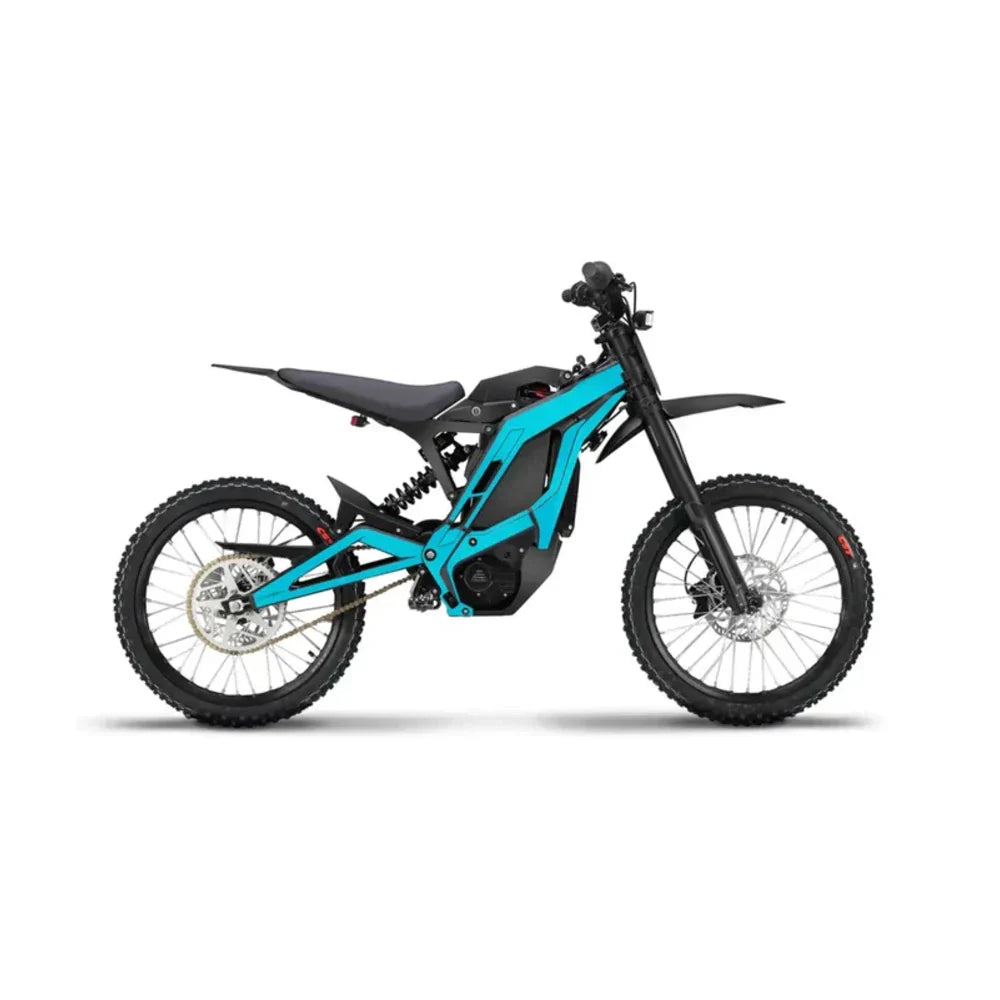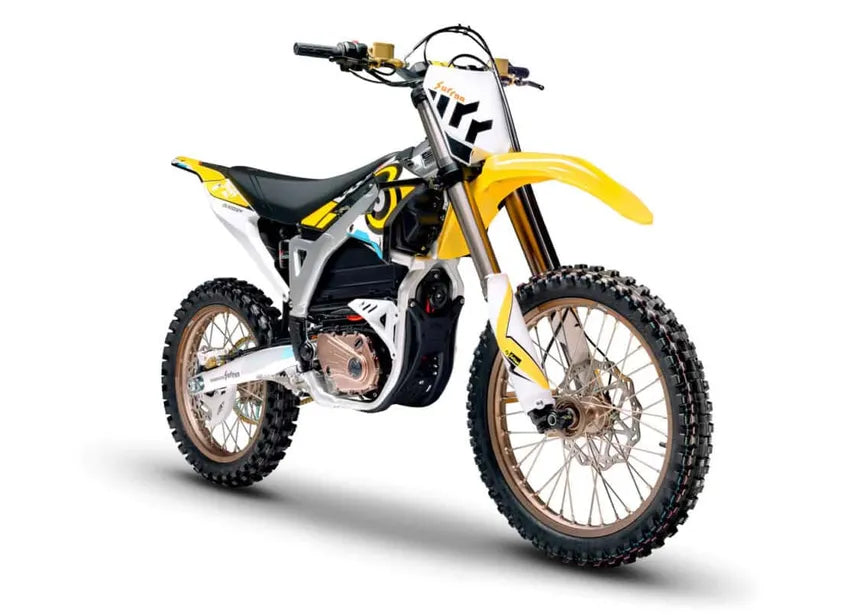If you're an avid rider or an enthusiastic owner of electric bikes like the Surron Light Bee, you know that performance upgrades can make a world of difference. One upgrade that stands out is the foot brake line. In this article, we'll dive deep into what makes this part crucial for your ride, how it enhances your biking experience, and why it could be time to consider swapping out your stock line for something more reliable and efficient. Buckle up, because we're going to explore everything you need to know about this essential component!
What Is a Foot Brake Line?
First things first, let's break down the basics. The foot brake line is a vital part of your braking system, connecting the brake pedal to the brake caliper. Its job is straightforward but critical: it delivers the necessary pressure to stop your bike safely and effectively. While it may seem like a minor component, without a reliable brake line, your safety is compromised.
Braking systems work on the principle of hydraulics, which means that when you step on the brake pedal, pressure is transmitted through the brake line to the calipers, ultimately causing the brake pads to clamp down on the rotor. A well-functioning foot brake line is essential for this process to work smoothly and efficiently. Upgrading this component can lead to better performance and enhanced control, allowing you to navigate challenging terrains and situations with confidence.
Why Upgrade to the Surron Light Bee Foot Brake Line?
So, why should you consider investing in a new foot brake line? Here are a few compelling reasons:
- Improved Performance: The upgraded foot brake line features a 10MM banjo end for the master cylinder and a 6MM banjo end for the brake caliper. This ensures a secure fit and optimal performance. When you apply the brakes, you want immediate feedback and responsiveness, and this upgraded line provides just that.
- Enhanced Durability: With a length of 30 inches, this brake line is constructed from high-quality materials designed to withstand the wear and tear of rugged terrain. Unlike stock options that may fray or crack over time, this foot brake line is built to last, giving you confidence in its durability.
- Better Brake Feel: Riders often report that upgrading to this specific foot brake line improves the feel of their brakes, providing better feedback and control when it matters most. Whether you're navigating steep descents or making sharp turns, having the right brake line can make all the difference in your riding experience.
- Compatibility: The Surron Light Bee foot brake line isn’t just for one model. It fits the Surron Light Bee, as well as the Talaria XXX, MX3, MX4, MX5, and the Eride Pro SS. This makes it a versatile option for many riders and allows you to upgrade multiple bikes if needed.
- Cost-Effectiveness: Investing in a good-quality brake line can save you money in the long run by preventing accidents and costly repairs due to brake failure. Prioritizing quality over the initial purchase price can lead to greater savings and a safer riding experience.
Installation Made Simple
You might be thinking, “Is installing a new foot brake line complicated?” The good news is that it’s a straightforward process that can be done at home with minimal tools. Here’s a quick guide to get you started:
Tools You'll Need
- Wrench set
- Brake fluid
- Rags for cleaning up
- Safety goggles (for protection)
- Jar or container for old brake fluid
- Torque wrench (optional, for those who want to ensure precise tightening)
Step-by-Step Installation Guide
Follow these simple steps to install your new foot brake line:
- Prep Your Bike: Start by ensuring your bike is stable and securely positioned. It's best to work on a level surface to avoid any accidents during the installation.
- Remove the Old Line: Using your wrench set, carefully disconnect the old foot brake line from both the master cylinder and the brake caliper. Make sure to do this slowly to avoid spilling brake fluid, and remember to have a container ready to catch any fluid that may leak.
- Clean Connection Points: Before installing the new line, clean the connection points on the master cylinder and brake caliper with a rag to remove any dirt or debris. This will ensure a better seal and prevent contamination.
- Install the New Line: Take your new foot brake line and attach the 10MM banjo end to the master cylinder and the 6MM banjo end to the brake caliper. Be sure to use the appropriate crush washers that come with the line to ensure a proper seal. Don’t forget to tighten them securely but avoid over-tightening to prevent damaging the fittings.
- Check for Leaks: Before you reconnect your brake fluid and test the brakes, check for any leaks around the fittings. Tighten if necessary, but be cautious not to overdo it.
- Refill and Bleed: Refill with brake fluid and bleed the brake system to remove any air bubbles, ensuring you have a firm brake feel. This step is crucial, as air in the system can lead to poor braking performance.
- Test It Out: Finally, take your bike for a short spin to test the brakes. Make sure everything feels right! Pay attention to how quickly the brakes engage and whether they feel responsive.
When to Replace Your Foot Brake Line
It's essential to understand when your foot brake line needs replacement. Knowing when to replace it can prevent serious safety issues. Here are some signs to look for:
- Visible Damage: Frays, cracks, or leaks are immediate indicators that it’s time for a change. Don’t ignore these signs, as they can lead to brake failure.
- Soft Brake Feel: If your brake pedal feels softer than usual or you have difficulty stopping, that could mean your line is compromised. In such cases, it’s best to get it checked out.
- Unresponsive Brakes: Any signs of delayed braking response could mean that the line isn’t performing as it should. In emergency situations, responsive brakes are non-negotiable.
- Age and Wear: Even if there are no visible issues, consider replacing your brake line as part of regular bike maintenance, especially if it’s been in use for several years.
Choosing the Right Foot Brake Line for Your Needs
With so many options available on the market, selecting the right foot brake line can take some research. Here are a few tips to keep in mind:
- Material Quality: Opt for a line made from durable materials designed to withstand extreme conditions. Look for features like abrasion resistance and reinforced connections.
- Length and Fit: Ensure the line you choose fits your specific bike model and provides the correct length for your setup. A poorly fitting line can lead to ineffective braking.
- Reviews and Feedback: Check customer reviews and forums to get insights from other riders who have installed the product. Hearing others' experiences can help guide your decision.
- Manufacturer Reputation: Invest in products from reputable manufacturers known for their quality. Established brands often provide better warranties and customer support.
- Price vs. Quality: Don't just go for the cheapest option. Sometimes paying a little more can lead to significantly better performance and durability, ultimately saving you money.
Maintenance Tips for Your Brake System
Once you've upgraded to a new foot brake line, keeping your entire brake system in top shape is essential. Here are some maintenance tips:
- Regular Inspections: Periodically check your brake line and connections for any signs of wear or damage, and inspect your brake pads and fluid levels.
- Flush and Replace Brake Fluid: Change your brake fluid as recommended by the manufacturer. Old fluid can absorb moisture, leading to decreased performance and potential corrosion.
- Check Brake Pads: Monitor your brake pads for wear and replace them when they reach their limit. Worn pads can affect your brake line’s performance.
- Keep it Clean: Keep your brake components clean from dirt and debris, which can hinder performance. Clean the calipers and rotors regularly.
- Consult the Manual: Always refer to your bike's manual for specific maintenance recommendations. Each model may have unique needs.
Conclusion: Elevate Your Riding Experience
Once you install the Surron Light Bee foot brake line, you’ll likely notice a remarkable improvement in your bike's braking performance. Not only does it enhance your control, but it also offers peace of mind knowing that you have a reliable system beneath you. With easy installation, compatibility with various models, and improved durability, it’s a worthy investment for any serious rider.
So, whether you're tackling trails or commuting, consider upgrading your foot brake line and take your riding experience to another level. By investing in quality components and maintaining them well, you ensure your bike remains a safe, enjoyable ride for many adventures to come. Happy riding, and may your brakes always respond when you need them the most!






